R.J. Stowell's Blog: rjsomeone, page 72
May 21, 2018
1984 - Hatful of Hollow
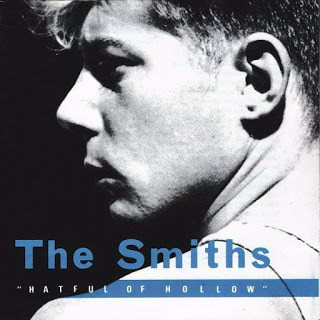 Readers of AM know the issue we have with compilations and best of LPs. With little exception, compilations don't even count (record label equivalents of the mix tape). There are exceptions like The Best of Leonard Cohen, or The Cure's Standing on a Beach (more of a survey or an evolution), and yet Rough Trade's release, Hatful of Hollow, just seven months after the eponymous The Smiths, is nearly everyone on the planet's first glimpse of the 80's most important band. Keep in mind that AM's fave Smiths' offering, as it is everyone's, is 1985's The Queen is Dead, but it's Hatful of Hollow that each of us distinctly remembers putting on the turntable the first time out.
Readers of AM know the issue we have with compilations and best of LPs. With little exception, compilations don't even count (record label equivalents of the mix tape). There are exceptions like The Best of Leonard Cohen, or The Cure's Standing on a Beach (more of a survey or an evolution), and yet Rough Trade's release, Hatful of Hollow, just seven months after the eponymous The Smiths, is nearly everyone on the planet's first glimpse of the 80's most important band. Keep in mind that AM's fave Smiths' offering, as it is everyone's, is 1985's The Queen is Dead, but it's Hatful of Hollow that each of us distinctly remembers putting on the turntable the first time out. The problem with the debut was that the production had little punch, leaving each track diluted and soulless, and since half the songs on the debut are presented live on Hatful Of Hollow, this compilation had value added appeal. The tracks that work best are "Reel Around The Fountain" (the drums so booming that it sounds like a different song) and an acoustic "This Charming Man" that is far more charming than the original cut, like it did have something to wear. "Please Please Please Let Me Get What I Want" and the dense, complex "How Soon Is Now," a track previously available only on the "William" 12" and a signature Smiths tune, illustrated the new heights to which the band so quickly aspired and arrived. Yet pride of place should perhaps go to a track never before available on vinyl, the Peel Sessions' version of "This Night Has Opened My Eyes," a sordid but plaintive tale of a young mother getting rid of an unwanted baby in which Morrissey's vivid observation of the woman's conflicting emotions does nothing to detract from the impact of the gruesome tragedy.
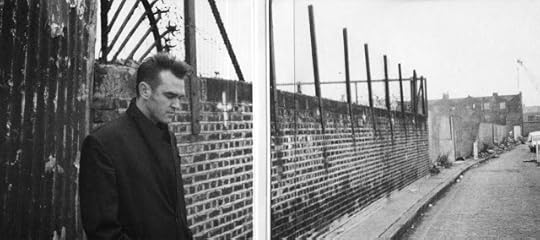
Still, the most staggering changes in the months that separate The Smiths from Hatful are not in Morrissey's beguiling, ambivalent obsessions, which have remained similar throughout and since, but in the flowering of Johnny Marr into one of the era's truly great instrumentalists. Compare the monosyllabic tonality of his early picking with the cascading mandolins that close "Please Please Please" and its clear just how much he'd matured, his role in the band worthy of equal billing, a fact compounded on the awesome, aforementioned "How Soon is Now." With Morrissey's vocals buried deep in a clammy, claustrophobic mix, Marr - adroitly supported by the two unsung Smiths (what were there names?) - unleashes a barrage of multi-tracked psychedelic rockabilly, his counterpart's Duane Eddy twang absorbed in an eerie quagmire of quivering guitar noise. Magnificent! It's a patchy, erratic affair and all the better for it.
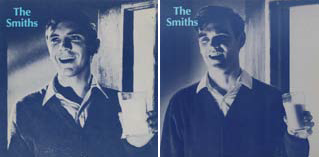 But back to the calculated mystique of Morrissey: the man-child who mastered the knack of giving away absolutely nothing while appearing to be the most frank, disarming, and explicit wordsmith in music. For all their sexual ambivalence and lyrical unorthodoxy, his songs are universal in the vulnerabilities and desires they seek to express. The Smiths were the first band that showed us that emotions and vulnerability were not the privilege of women only. It's a paradox that only the greatest of poets can extol. At 21, Morrissey taught me everything I needed to know, and nothing I didn't already. Hatful was the LP that I find the most significant in my formative years in that it appealed to me intellectually (he even invented a new word in its title), sensually, emotionally, leaving me with questions, more questions than answers, but kicking me firmly in the ass, knocking me down, calling me names and then taunting me to get back up, sissy (which I did), giving me the impetus to fight battles I might not win (and didn't). And I got up, all bloody with a black eye yelling, "Fuck you." It was an album that let me cry about it all I wanted, but to stand tough, tears in my eyes, fists clenched and be a man, a charming man, the son and the heir (or is it the sun and the air?) and say, "For once in my life, let me get what I want." It didn't matter that that rarely happened - then.
But back to the calculated mystique of Morrissey: the man-child who mastered the knack of giving away absolutely nothing while appearing to be the most frank, disarming, and explicit wordsmith in music. For all their sexual ambivalence and lyrical unorthodoxy, his songs are universal in the vulnerabilities and desires they seek to express. The Smiths were the first band that showed us that emotions and vulnerability were not the privilege of women only. It's a paradox that only the greatest of poets can extol. At 21, Morrissey taught me everything I needed to know, and nothing I didn't already. Hatful was the LP that I find the most significant in my formative years in that it appealed to me intellectually (he even invented a new word in its title), sensually, emotionally, leaving me with questions, more questions than answers, but kicking me firmly in the ass, knocking me down, calling me names and then taunting me to get back up, sissy (which I did), giving me the impetus to fight battles I might not win (and didn't). And I got up, all bloody with a black eye yelling, "Fuck you." It was an album that let me cry about it all I wanted, but to stand tough, tears in my eyes, fists clenched and be a man, a charming man, the son and the heir (or is it the sun and the air?) and say, "For once in my life, let me get what I want." It didn't matter that that rarely happened - then.
Published on May 21, 2018 05:16
Funniest Thing I Ever Heard
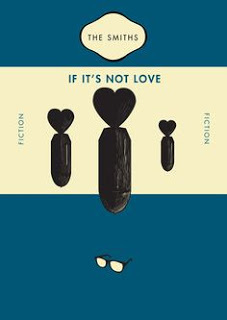 The Smiths, right off the bat, had clever, camp, and literary sewn up, yet they also had access to my world of teen angst; they were the opposite of bombastic, but best played at max volume. They had amazing guitar riffs and wilting self-deprecation. They were full of outrage, but not the way punk had taught me, and they were funny in a way that no American music was. I can’t think of an American artist then, or now, who could have written, "I want to live and I want to love / I want to catch something that I might be ashamed of." That line from "Frankly Mr. Shankly" sums it up: hilarious, grandiose, and bathetic—wanting it all, wanting to dance to it, wanting the disease that comes with it.
The Smiths, right off the bat, had clever, camp, and literary sewn up, yet they also had access to my world of teen angst; they were the opposite of bombastic, but best played at max volume. They had amazing guitar riffs and wilting self-deprecation. They were full of outrage, but not the way punk had taught me, and they were funny in a way that no American music was. I can’t think of an American artist then, or now, who could have written, "I want to live and I want to love / I want to catch something that I might be ashamed of." That line from "Frankly Mr. Shankly" sums it up: hilarious, grandiose, and bathetic—wanting it all, wanting to dance to it, wanting the disease that comes with it.When I was in my early 20s the Smiths were the most important thing in my life, and so I had one particular conversation many times. Somebody would say of the band, "I hate them, they're so miserable." "No they're not," I would chime in, "They're funny." Cue the eye-rolling, exclamations, explanations, etceteras. But I was right - the Smiths were funny. Not so much for the occasional punchline-- "Caligula would have blushed," or "You should hear me play pian-ohh"-- but for Morrissey's theatricality and timing: You could always take him as seriously as you needed, like a pill, he never demanded it. Girlfriend in a coma? Are you kidding? "I know, it's ser-i-ous." Hysterical! "Would you like to marry me?/ And if you like you can buy the ring." How is that not laugh out loud funny? "A jumped-up pantry boy," "The monkish monsignor, with a head full of plaster said, 'My man, get your vile soul dry-cleaned!'" The list is endless! More:
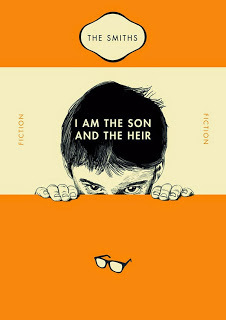 Reel Around the Fountain: this hyper-sexual song has some of my favorite lyrics: "Fifteen minutes with you/ Well, I wouldn't say no/ Oh, people said that you were virtually dead/ And they were so wrong./ Oh, people said that you were easily led/ And they were half-right. I dreamt about you last night/ And I fell out of bed twice." This Charming Man: "I would go out tonight/ But I haven't got a stitch to wear." William it Was Really Nothing: "I don't dream about anyone - except myself !" How Soon is Now?: "I am the son and heir/ Of the nothing in particular." Handsome Devil: "There's more to life than books, you know/ But not much more." Heaven Knows I'm Miserable Now: "I was happy in the haze of a drunken hour/ But heaven knows I'm miserable now./ I was looking for a job, and then I found a job/ And heaven knows I'm miserable now./ In my life/ Why do I smile/ At people who I'd much rather kick in the eye?" Nowhere Fast: "I'd like to drop my trousers to the world/I am a man of means (of slender means)/ Each household appliance/ Is like a new science in my town./ And when I'm lying in my bed/ I think about life/ And I think about death/ And neither one particularly appeals to me."
Reel Around the Fountain: this hyper-sexual song has some of my favorite lyrics: "Fifteen minutes with you/ Well, I wouldn't say no/ Oh, people said that you were virtually dead/ And they were so wrong./ Oh, people said that you were easily led/ And they were half-right. I dreamt about you last night/ And I fell out of bed twice." This Charming Man: "I would go out tonight/ But I haven't got a stitch to wear." William it Was Really Nothing: "I don't dream about anyone - except myself !" How Soon is Now?: "I am the son and heir/ Of the nothing in particular." Handsome Devil: "There's more to life than books, you know/ But not much more." Heaven Knows I'm Miserable Now: "I was happy in the haze of a drunken hour/ But heaven knows I'm miserable now./ I was looking for a job, and then I found a job/ And heaven knows I'm miserable now./ In my life/ Why do I smile/ At people who I'd much rather kick in the eye?" Nowhere Fast: "I'd like to drop my trousers to the world/I am a man of means (of slender means)/ Each household appliance/ Is like a new science in my town./ And when I'm lying in my bed/ I think about life/ And I think about death/ And neither one particularly appeals to me."
Published on May 21, 2018 03:47
May 20, 2018
A Compendium of When 2
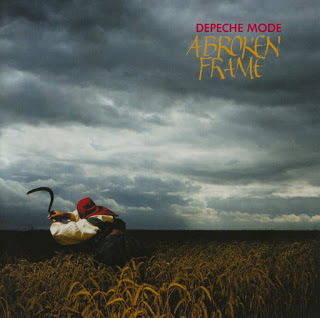 It built so slowly in retrospect; that wasn't the case at the time - everything was so new, you couldn't keep up with it. Then it built to its high in 1980 like a lit fuse and, when throughout the years I could list nearly everything, this post's list took editing like leaving friends off the wedding list. Sorry Angry Samoans, you're going to a different party. A decade of New Wave:
It built so slowly in retrospect; that wasn't the case at the time - everything was so new, you couldn't keep up with it. Then it built to its high in 1980 like a lit fuse and, when throughout the years I could list nearly everything, this post's list took editing like leaving friends off the wedding list. Sorry Angry Samoans, you're going to a different party. A decade of New Wave:1981: Penthouse and Pavement, Heaven 17; East Side Story, Squeeze; English Garden, Eurythmics; Ghost in the Machine, The Police; Dare, Human League; Wild Gift, X; October, U2; Flowers of Romance, PIL, Movement, New Order; Heaven Up Here, Echo and the Bunnymen; Speak and Spell, Depeche Mode; Talk Talk Talk, Psychedelic Furs; Architecture and Morality, Orchestral Manoeuvres in the Dark; Juju, Siouxsie and the banshees; Beauty and the Beat, The Go-Go's; 1982: Imperial Bedroom, Elvis Costello; Lexicon of Love, ABC; Too-Rye-Aye, Dexy's Midnight Runners; English Settlement, XTC; Upstairs at Eric's, Yazoo; Pornography, The Cure; Rio, Duran Duran; Night and Day, Joe Jackson; A Broken Frame, Depeche Mode; 1983: Power, Corruption and Lies, New Order; War, U2; Speaking in Tongues, Talking Heads; High Land, High Rain, Aztec Camera; Touch, Eurythmics; Seven and the Ragged Tiger, Duran, Duran; Colour by Numbers, Culture Club; Porcupine, Echo and the Bunnymen; Dazzle Ships, Orchestral Manoeuvres in the Dark; The Hurting, Tears for Fears; You and Me Both, Yazoo; Construction Time Again, Depeche Mode; 1984: Hatful of Hollow, The Smiths; Reckoning, REM; Sparkle in the Rain, Simple Minds; Some Great Reward, Depeche Mode; Human Lib, Howard Jones; It's My Life, Talk Talk; It'll End in Tears, This Mortal Coil; 1985: Songs from the Big Chair, TfF; The Head on the Door, The Cure; Fables of the Reconstruction, REM; Steve McQueen, Prefab Sprout; Lowlife, New Order; Meat is Murder, The Smiths; This is the Sea, The Waterboys.
 1986: Please, Pet Shop Boys; Wonderland, Erasure; Life's Rich Pageant, REM, The Queen is Dead, The Smiths; Skylarking, XTC; Brotherhood, New Order; Black Celebration, Depeche Mode; Whiplash Smile, Billy Idol; Victorialand, Cocteau Twins; From Langley Park to Memphis, Prefab Sprout; 1987: Strangeways Here We Come, The Smiths; Music for the Masses, Depeche Mode; Kiss Me, Kiss Me, Kiss Me, The Cure; Lion and the Cobra, Sinead O'Connor; Faith, George Michael; Actually, Pet Shop Boys; Joshua Tree, U2; 1988, Viva Hate, Morrissey; Nothing's Shocking, Jane's Addiction; Surfer Rosa, The Pixies; Blue Bell Knoll, Cocteau Twins; The Innocents, Erasure; Life's Too Good, Sugar Cubes; Green, REM; From Langley Park to Memphis; 1989: Disintegration, The Cure; Pretty Hate Machine, Nine Inch Nails; Doolittle, The Pixies; Technique, New Order; The Real Thing, Faith No More; Bleach, Nirvana; 1990: Violator, Depeche Mode; Ritual De Lo Habitual, Jane's Addiction; Bona Drag, Morrissey; Listen Without Prejudice, George Michael; Reading, Writing and Arithmetic, The Sundays; Heaven or Las Vegas, Cocteau Twins; Behaviour, Pet Shop Boys.
1986: Please, Pet Shop Boys; Wonderland, Erasure; Life's Rich Pageant, REM, The Queen is Dead, The Smiths; Skylarking, XTC; Brotherhood, New Order; Black Celebration, Depeche Mode; Whiplash Smile, Billy Idol; Victorialand, Cocteau Twins; From Langley Park to Memphis, Prefab Sprout; 1987: Strangeways Here We Come, The Smiths; Music for the Masses, Depeche Mode; Kiss Me, Kiss Me, Kiss Me, The Cure; Lion and the Cobra, Sinead O'Connor; Faith, George Michael; Actually, Pet Shop Boys; Joshua Tree, U2; 1988, Viva Hate, Morrissey; Nothing's Shocking, Jane's Addiction; Surfer Rosa, The Pixies; Blue Bell Knoll, Cocteau Twins; The Innocents, Erasure; Life's Too Good, Sugar Cubes; Green, REM; From Langley Park to Memphis; 1989: Disintegration, The Cure; Pretty Hate Machine, Nine Inch Nails; Doolittle, The Pixies; Technique, New Order; The Real Thing, Faith No More; Bleach, Nirvana; 1990: Violator, Depeche Mode; Ritual De Lo Habitual, Jane's Addiction; Bona Drag, Morrissey; Listen Without Prejudice, George Michael; Reading, Writing and Arithmetic, The Sundays; Heaven or Las Vegas, Cocteau Twins; Behaviour, Pet Shop Boys.
Published on May 20, 2018 03:52
May 19, 2018
A Compendium of When - New Wave thru 1980
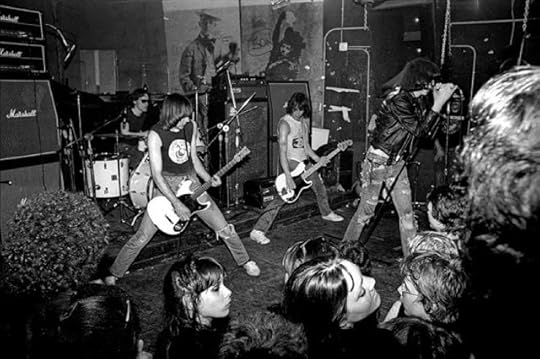 By 1980, particularly in the face of New Romance and the artificial instrumentation of Simple Minds or Blancmange, picking out the New Wave was simple - no one was accusing Steve Strange of being a punk or a rocker - but creating a chronology of New Wave (excluding Punk and Glam) is a simple task only in the 80s. Where then, to start? For me, the New Wave began in 1979 with Unknown Pleasures. I didn't discover Sparks' Kimono My House until '81 and, at least at the time, I wasn't including the likes of Joe Jackson or Elvis Costello (hindsight clarifies everything – despite our insistent revisionism); and I'd never heard of Simple Minds. It's interesting how many readers were confused that AM went from Pink Floyd to Joy Division despite out insistence on continuity. Indeed the only real connection was the odd dichotomy that The Wall and Unknown Pleasures were of the same era.
By 1980, particularly in the face of New Romance and the artificial instrumentation of Simple Minds or Blancmange, picking out the New Wave was simple - no one was accusing Steve Strange of being a punk or a rocker - but creating a chronology of New Wave (excluding Punk and Glam) is a simple task only in the 80s. Where then, to start? For me, the New Wave began in 1979 with Unknown Pleasures. I didn't discover Sparks' Kimono My House until '81 and, at least at the time, I wasn't including the likes of Joe Jackson or Elvis Costello (hindsight clarifies everything – despite our insistent revisionism); and I'd never heard of Simple Minds. It's interesting how many readers were confused that AM went from Pink Floyd to Joy Division despite out insistence on continuity. Indeed the only real connection was the odd dichotomy that The Wall and Unknown Pleasures were of the same era.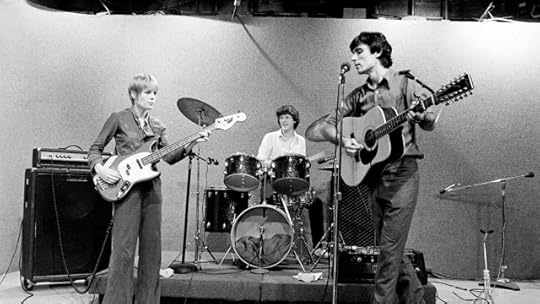
The 70s, though, were rich in its diversity. While 60s radio found a common thread with Beatles and Buffalo Springfield, with Shangri-Las and Temptations, the 70s were all over the map. The decade began with those bands and artists evolving from out of the psychedelic scene or creating a singer/songwriter enclave in Laurel Canyon, instantly establishing a new sound, a 70s sound, distanced from the naivete of what had come before. It was in the 70s that The Stones fully emerged from the shadow of whom Mickey Dolenz referred to as "The Four Kings of EMI;" and those kings would go on to find a voice as individuals. Pink Floyd found a niche that would propagate one of the great musical achievements of the 20th Century, and Americana was borne out of After the Goldrush and Mud Slide Slim. Joni found jazz, CBGB's found The Ramones and Blondie and Talking Heads. And then there was disco and punk in reaction; and when we finally settled down, there came the New Wave.
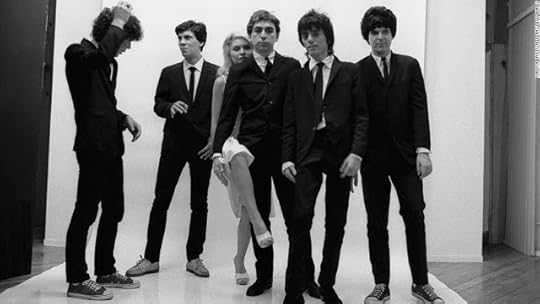
Over the past month, AM has followed the emergence of progressive rock from King Crimson to Syd Barrett; the thread of connection simple, but while most will trace the New Wave as the evolution of Punk, there are many more things in heaven and earth than dreamt of in that silly, one-sided philosophy of yours, Horatio. Those who fail to see the progressive influence on bands like New Order and Cocteau Twins, or the obvious progressive punk of King Crimson.3 (with Adrian Belew and Tony Levin), are thickheaded.
As a primer for when, let's examine New Wave long before Post Punk (A special thanks, btw, to my dog-eared, yet treasured, collection of Smash Hits magazine):

1974: Kimono My House, Sparks; so far ahead of its time. True New Wave and not merely a Glam change of course (like The New York Dolls); Taking Tiger Mountain (By Strategy), Eno; ditto. Skip '75. 1976: Blondie, Blondie. 1977: Marquee Moon, Television; My Aim is True, Elvis Costello; Costello's appearance on Saturday Night Live (December 17, 1977), aside from being controversial due to Elvis's on-air decision to play "Radio, Radio" rather than "Less Than Zero," may be the single most important moment in establishing New Wave as a genre. Talking Heads '77, Talking Heads; an argument can be made (and a good one) that this is indeed where New Wave begins. Note: 1977 was Punk’s first and most iconic year. With the release of Never Mind the Bollocks, The Ramones, The Clash and Damned, Damned, Damned, the genre was an in-your-face answer to prog and corporate pop, and more decidedly, disco; a dedicated fuck you to Georgio Maroder.
1978: Parallel Lines, Blondie; the Blondie breakthrough of thoroughly accessible Punky Pop. More Songs About Buildings and Food; the reason most of us first discovered Talking Heads and retroactively TH '77; Outlandos D'Amour, The Police; "Roxanne" was the first New Wave "standard;" All Mod Cons, The Jam; Modern Dance, Pere Ubu; Jesus of Cool, Nick Lowe; This Year’s Model, Elvis Costello; First Issue, PIL (Post Punk); The Cars, The Cars (New Wave hits Top 40 radio); Are We Not Men?, Devo.
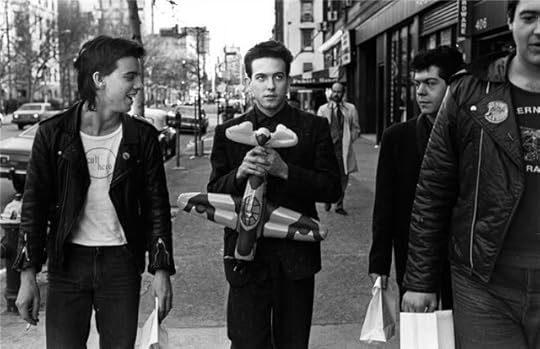 Can You Even Guess?
Can You Even Guess?In 1979, Punk had come and gone (if punk ever really goes away), Making way for the 80s.
1979: Unknown Pleasures, Joy Division; Fear of Music, Talking Heads; Look Sharp, Joe Jackson; "Is She Really Going Out With Him," one of the first crossover hits. Armed Forces, Elvis Costello. Regatta de Blanc, The Police; Drums and Wires, XTC; Labour of Lust, Nick Lowe; Life in a Day, Simple Minds; Replicas, Tubeway Army; Entertainment, Gang of Four; Candy O, The Cars; Three Imaginary Boys, The Cure; B-52's, B-52's; Cool for Cats, Squeeze; Dirk Wear White Sox, Adam and the Ants; 1980: Remain in Light, Talking Heads; Closer, Joy Division; Get Happy, Elvis Costello; Crazy Rhythms, The Feelies; Reel to Real Cocophony, Simple Minds; Sound Affects, The jam; Colossol Youth, Young Marble Giants; Vienna, Ultravox; Los Angeles, X; Kilamanjaro, The Teardrop Explodes; Searching for the Young Soul Rebels, Dexy's Midnight Runners; Boy, U2, Crocodiles, Echo and the Bunnymen; Seventeen Seconds, The Cure; Kaleidoscope, Siouxsie and the Banshees; Argy Bargy, Squeeze; The Correct Use of Soap, Television; Orchestral Manoeuvres in the Dark , Orchestral Manoeuvres in the Dark; Psychedelic Furs, Psychedelic Furs; Gentlemen Take Polaroids, Japan; Travelogue, The Human League; True Colors, Split Enz; Black Sea, XTC; Pretenders, Pretenders.
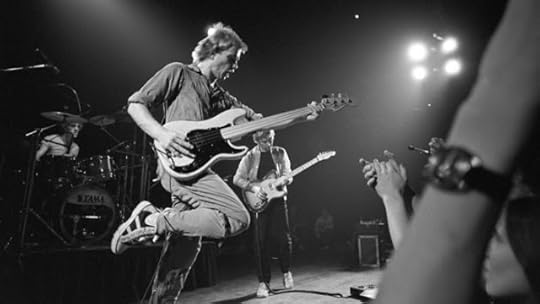
And all of it happened in the 1970s (yes, we've covered this before: 1980 is a part of the 70s; it's just simple arithmetic). (It's funny, but there are few who even mention the band that in many respects, from the 70s, throughout the 80s and well into the 90s, were the biggest band in the world, despite disco and punk and post-punk and the new wave. Really? You don't know? Of course you do: The Grateful Dead.)
Published on May 19, 2018 06:10
May 18, 2018
Shoegaze
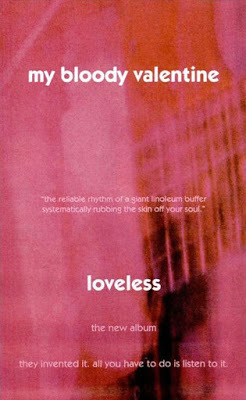 Dreamy. Definition enough. Urban Dictionary adds: A style of music that emerged in England in the late 80s featuring blisteringly loud and dreamily reverberated feedback, recently revived by electronic bands like M83 and Ulrich Schnauss. Pinning it down: psychedelic, drug induced euphoria, trippy; indeed, dreamy, definition enough. The argument arises: who defines the genre best? For this writer, Cocteau Twins. For others, My Bloody Valentine, This Mortal Coil, Lush. Oh, and the name itself? Artists staring at their shoes.
Dreamy. Definition enough. Urban Dictionary adds: A style of music that emerged in England in the late 80s featuring blisteringly loud and dreamily reverberated feedback, recently revived by electronic bands like M83 and Ulrich Schnauss. Pinning it down: psychedelic, drug induced euphoria, trippy; indeed, dreamy, definition enough. The argument arises: who defines the genre best? For this writer, Cocteau Twins. For others, My Bloody Valentine, This Mortal Coil, Lush. Oh, and the name itself? Artists staring at their shoes.Suffused with swirling, disorienting, blearily processed guitar, the style coalesced from a cloud of influences in the 80s (in particular the Cocteau Twins' first release in 1984, Treasure (AM7), alongside the 4AD project, This Mortal Coil) when My Bloody Valentine released its game-changing album Isn't Anything (AM6). Imperviously heavy and sweetly melodic, it quickly inspired a glut of soundalikes—although there were other random antecedents. Drawing on atmospheric post-punk and droning psychedelia, Shoegaze received an extra boost of inspiration from the U.S. underground scene, most notably big-guitar groups like Hüsker Dü and Sonic Youth. Shoegaze rose in a parallel arc to the similarly trippy Madchester sound, but where Madchester was outgoing, Shoegaze was introverted (once again the name, originally meant as a derogatory term referring to the scene's notoriously shy stage presence). After reaching its apotheosis with My Bloody Valentine's 1991 masterpiece, Loveless, Shoegaze petered out, but not with regard to influence (once again the hipster/college ideology comes into play; Shoegaze today is a hipster thing, the kind of music they'd play in the background if Portland, Oregon was a movie).
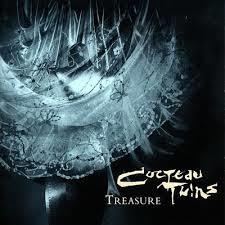 The gold standard of Shoegaze, My Bloody Valentine’s Loveless (AM8) is overshadowed by its own towering reputation (that happens). Set aside the story of its long, legendary creation and numerous innovations and iterations, and what's left is a batch of dreamy, beautiful pop that gets lost in the hyperbole. It's true that mastermind Kevin Shields spent years painstakingly perfecting the album in the studio, and that the sampling and recording techniques he used changed guitar rock forever, but Loveless, gorgeous as it is, stands as more a frozen moment than the beginning of an epoch.
The gold standard of Shoegaze, My Bloody Valentine’s Loveless (AM8) is overshadowed by its own towering reputation (that happens). Set aside the story of its long, legendary creation and numerous innovations and iterations, and what's left is a batch of dreamy, beautiful pop that gets lost in the hyperbole. It's true that mastermind Kevin Shields spent years painstakingly perfecting the album in the studio, and that the sampling and recording techniques he used changed guitar rock forever, but Loveless, gorgeous as it is, stands as more a frozen moment than the beginning of an epoch.
Published on May 18, 2018 04:31
May 17, 2018
Music for Lovers
 Never was there an artist who captured unrequited love like Robert Smith in "A Thousand Hours" and "Just One More Time" from the LP Kiss Me Kiss Me Kiss Me. These are angst ridden and beautiful poems that stand alongside Shelley and Keats. And Morrissey's funny aloofness was gut-wrenching. We had choices back then, the sour dirges of the big three (Cure, Smiths, JD) or the peppy poppy playfulness of Haircut 100, Altered Images and ABC. The third tine of this trident, Cocteau Twins and the 4AD contingent, were for lovers. This was late night, gaze into one another's eyes music, like Death Cab. The concept sounds sappy now, and why, because we are, in the new millennium, too cool for love.
Never was there an artist who captured unrequited love like Robert Smith in "A Thousand Hours" and "Just One More Time" from the LP Kiss Me Kiss Me Kiss Me. These are angst ridden and beautiful poems that stand alongside Shelley and Keats. And Morrissey's funny aloofness was gut-wrenching. We had choices back then, the sour dirges of the big three (Cure, Smiths, JD) or the peppy poppy playfulness of Haircut 100, Altered Images and ABC. The third tine of this trident, Cocteau Twins and the 4AD contingent, were for lovers. This was late night, gaze into one another's eyes music, like Death Cab. The concept sounds sappy now, and why, because we are, in the new millennium, too cool for love. 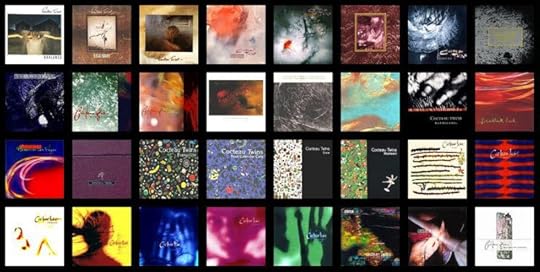
According to The Guardian, "Pop was always Elizabeth Fraser's escape. Back in Grangemouth, a horrendous petrochemical town in Stirlingshire, she seemed destined to follow her mother into the local rag trade until she realized that having 'boxing gloves for hands' meant she could barely operate the machines. She would go dancing at a local club, the Nash, which is where she met Robin Guthrie; he spotted the 17-year-old Fraser on the dance floor one night in 1980 and asked her to join the band he'd started with his friend Will Heggie. By saying yes, Fraser acquired a soulmate and an enabler. 'I looked up to him. I could never have done it without him.' The distinctive sound they developed 'flowed from the chemistry between us,' particularly once Simon Raymonde, a Londoner, replaced Heggie."
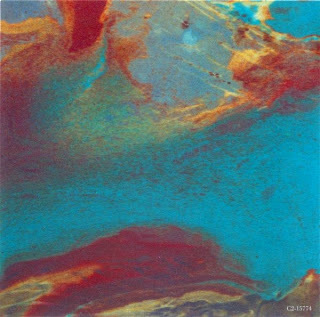 So many people swear by their influence, claiming that they swept them off their feet on first listen. The indefinable beauty of the melodies combined with the utter indecipherability of Fraser's lyrics to form some sort of nondescript parable. Her vocal dexterity segues seamlessly into Guthrie's dreamy guitars, creating a cacophony of harmonious noise. Cocteau Twins is one of the few bands that can guide you to another world. That netherland of their third album, Treasure, is oddly familiar, but still like nothing anyone has ever heard or felt. The song titles refer to Greek mythology, some have meaning in an estranged folklore, yet in the end there's no point of reference to anything in the "real" world. Liz Fraser's ethereal voice sings beautiful, unique, lullaby-like melodies over a mat of Robin Guthrie's guitar work, creating a dream you haven't dreamt before. It was music you put on for intimacy, a music that allowed you to lose your virginity over and again; not since "The Great Gig in the Sky" had there been so many utterances of "Oh my God, Oh my God" in its presence. If Heaven exists (which it does… discuss…), this is the music they play.
So many people swear by their influence, claiming that they swept them off their feet on first listen. The indefinable beauty of the melodies combined with the utter indecipherability of Fraser's lyrics to form some sort of nondescript parable. Her vocal dexterity segues seamlessly into Guthrie's dreamy guitars, creating a cacophony of harmonious noise. Cocteau Twins is one of the few bands that can guide you to another world. That netherland of their third album, Treasure, is oddly familiar, but still like nothing anyone has ever heard or felt. The song titles refer to Greek mythology, some have meaning in an estranged folklore, yet in the end there's no point of reference to anything in the "real" world. Liz Fraser's ethereal voice sings beautiful, unique, lullaby-like melodies over a mat of Robin Guthrie's guitar work, creating a dream you haven't dreamt before. It was music you put on for intimacy, a music that allowed you to lose your virginity over and again; not since "The Great Gig in the Sky" had there been so many utterances of "Oh my God, Oh my God" in its presence. If Heaven exists (which it does… discuss…), this is the music they play.And for me it was 1986's Love's Easy Tears (AM10, EP) that perfected the ethereal carnality of it, angel trumpets and devil trombones (to borrow from Alex), this EP was the epitome of "leaving them with less," the listener yearning for more, yet when there is a song like "Those Eyes, That Mouth," why would anyone even try for more? There is no more, really, to say than "Those Eyes, That Mouth," (Keats and Yeats were on her side….). Oddly, it wasn't till many, many years later that I came to the realization that the song had lyrics, real lyrics, mind you; imagine that:
He draws his horsesPretend your angerAnd draws his horsesBeing chosen also
Please get upFall, please get upFall, please get upDon't ruin yourself
So see and hearSultitan itanSo see and hearPlain tiger iger
In my heartSet you right upIn my heartI sing this song
Back you upHow messed I amBack you upI consider
So he got upI must see himI must see himAnd all got up
Sore got heApalled got upApalled got upI'm in this song
So see and hearSultitan itanSo see and hearPlain tiger iger
And my defeat and hope And sad and hope Might not feel downDon't listen, now
Published on May 17, 2018 03:54
May 16, 2018
Cocteau Twins - Burn This Madhouse Down
 The Art Pop movement, if it exists as a "movement," connects the avant-garde with dream pop, post punk, glam and even the ethereal world of a band like Yes. From The Tubes' theatrics to Steely Dan's sophisticated bi-bop, Art Pop bonds the music of three decades. Unique among the genre were Cocteau Twins. Although, much of their material was ethereally beautiful indeed, those only familiar with Cocteau Twins later work (by which time they'd evolved into what eventually became known as Dream Pop), may well find them particularly post-punky. This is particularly the case for the Twins' first LP, Garlands. Dark. Ambient. Trippy, Elizabeth Fraser's haunting vocals go off doing their own thing, often venturing into lands of glossolalia and neologism. Although "Blood Bitch," "Wax and Wane" and "But I'm Not" all make an immediate impact on the listener, the LP is a far cry in both content and context from later offerings like Blue Bell Knoll.
The Art Pop movement, if it exists as a "movement," connects the avant-garde with dream pop, post punk, glam and even the ethereal world of a band like Yes. From The Tubes' theatrics to Steely Dan's sophisticated bi-bop, Art Pop bonds the music of three decades. Unique among the genre were Cocteau Twins. Although, much of their material was ethereally beautiful indeed, those only familiar with Cocteau Twins later work (by which time they'd evolved into what eventually became known as Dream Pop), may well find them particularly post-punky. This is particularly the case for the Twins' first LP, Garlands. Dark. Ambient. Trippy, Elizabeth Fraser's haunting vocals go off doing their own thing, often venturing into lands of glossolalia and neologism. Although "Blood Bitch," "Wax and Wane" and "But I'm Not" all make an immediate impact on the listener, the LP is a far cry in both content and context from later offerings like Blue Bell Knoll.Swirling out of Grangemouth in 1979 amidst punk and disco with an ambient sound that, despite Brian Eno et al eluding the populace, here was new territory post-punk hadn't ventured into. It would be three years before Garlands would emerge, but when it did, what a beast it was.

Elizabeth Fraser, Robin Guthrie and original bassist Will Heggie formed Cocteau Twins in Scotland in 1979, heavily influenced by Joy Division, The Birthday Party (who they would go on tour with), and Souixsie and the Banshees. Soon after their formation, they recorded and sent two demos to John Peel and Ivo at 4AD Records. The band was contacted immediately by Peel and booked for a recording session. Garlands cracked the top 5 spot on the independent charts, but many critics found it left something desired. Still, Garlands is blissfully dark, and quaveringly beautiful. Elizabeth's voice is like nothing anyone had ever heard before (or will ever hear again). Even in its formative stage, Fraser inspired a galvanic response with her vocals. "Hazel," "Dear Heart" and "Blind Dumb Deaf" hint at what was to come. In this early recording Guthrie's guitar is ragged and piercing as Fraser floats her voice in the space surrounding. After first listening to this album, I knew it belonged in my list of all time favorites (although, unfortunately, I didn't discover it until a girlfriend – of course a girlfriend – forced me to, in what was probably '84. Still I immersed myself in the LP's ethereal gloom.
It's interesting to reflect on how the Garlands album marked something of a change in direction for album label 4AD, which until just a year earlier had been producing aggressive post-punk albums like In the Flat Field and Mask by Bauhaus. The Twins' follow-up EP, Lullabies, followed later that year, more along those post punk grinds.
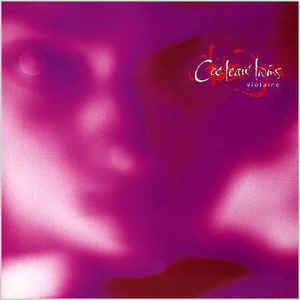 Cocteau Twins in their earlier years were quite prolific, swiftly rolling out Head Over Heels (4AD, 1983), Sunburst and Snowblind (4AD, 1983), the Peppermint Pig EP (4AD, 1983 - which the band admitted was “shit…a bad mixture, bad song, bad producer, bad band”), Treasure (4AD, 1984) and the immaculate Aikea-Guinea EP (4AD, 1985), as well as a number of singles. For those who just wanted to dip their toes rather than dive right in, much of the best from this early period can be sampled on the extremely fine compilation The Pink Opaque (4AD, 1985). For each, the combination of thick, spacey, unreachable vocals with heavily distorted guitars can transport one to some kind of musical heaven. Here is the realm of the dreamy, distant and emotional varites of pop music. Dream Pop has been something of an under-appreciated genre for a majority of its existence. Distant, extremely emotional and somewhat vague, it sounds more like a needy girlfriend than something you'd want to spend time listening to (oh, did I let on too much?). But here is a genre that deserves consideration. Some music catches you right away, but these tunes tend to grow slowly into something unexpected, a soundtrack of ethereal days.
Cocteau Twins in their earlier years were quite prolific, swiftly rolling out Head Over Heels (4AD, 1983), Sunburst and Snowblind (4AD, 1983), the Peppermint Pig EP (4AD, 1983 - which the band admitted was “shit…a bad mixture, bad song, bad producer, bad band”), Treasure (4AD, 1984) and the immaculate Aikea-Guinea EP (4AD, 1985), as well as a number of singles. For those who just wanted to dip their toes rather than dive right in, much of the best from this early period can be sampled on the extremely fine compilation The Pink Opaque (4AD, 1985). For each, the combination of thick, spacey, unreachable vocals with heavily distorted guitars can transport one to some kind of musical heaven. Here is the realm of the dreamy, distant and emotional varites of pop music. Dream Pop has been something of an under-appreciated genre for a majority of its existence. Distant, extremely emotional and somewhat vague, it sounds more like a needy girlfriend than something you'd want to spend time listening to (oh, did I let on too much?). But here is a genre that deserves consideration. Some music catches you right away, but these tunes tend to grow slowly into something unexpected, a soundtrack of ethereal days.Alongside fellow 4AD mates Dead Can Dance, Cocteau Twins would become almost totally responsible for forming the roots of a Goth spin-off genre at times referred to as Ethereal Wave, elevator music for the soul. This writer's go to CT EP is Love's Easy Tears, with the over the top beautiful "Those Eyes, That Mouth," which is indulgent enough that you will love it or despise it; there is no in-between. ALL the sounds are CRANKED up here; guitars crush into each other, vocals soar, sounds flood one's senses. I must admit, I have a hard time being at all critical of this because it touches me on such a personal level. I've always longed for more vocals like these, soaked in Romanticism, evoking a myriad of gushing description. Like Peter Gabriel's "Humdrum," "TE,TM" haunts my dreams.
I should stop here, but back to the needy gf and "Ice-Blink Luck" from Heaven or Las Vegas (4AD, 1990), which continues to preoccupy alternative dance floors. (That in mind, we'll close with the beauty of it and the LP itself, fitting in so well with foam and ecstasy). On a New England excursion in the summer of '90, the ngf (needy girl friend) listened to this track a hundred times in a row. Those ngf/nbf tracks seem to stay with us the longest (another was in '84 in Big Bear, California when my tngf (teen ngf) played "Boys Don't Cry" and only "Boys Don't Cry" for the entire drive into the mountains). I still listen to these tracks with kindness, a bit of regret and a few "thank Gods." From "Cherry-Coloured Funk" to "Frou-Frou Foxes in Midsummer's Fires," HOLV presents the Twins' most down-to-Earth performances in an odd mix of surreal realism. After all, "You're the macho cherry-coal/ That will burn this whole madhouse down./ And I'll throw open like a walnut safe/ More like a love that's a bottle of exquisite stuff, yes."

Published on May 16, 2018 04:55
May 15, 2018
Brian Eno
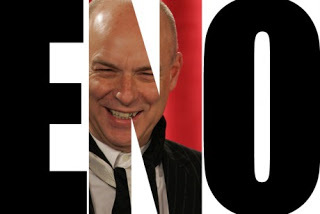 There's an axiom that if you remember Woodstock you weren't there. Although the protagonist in my novel Miles From Nowhere (a follow-up to Jay and the Americans – coming September 2018) makes it to the Aquarian Festival (late), recalling it all (mostly), I believe there's something indeed that obliterates the recollection of our wild years; Quaaludes maybe. That said, I remember Roxy Music no sooner than Manifesto or Flesh + Blood, "Love is the Drug," the club-life exception. But my informative years didn't focus on the history or the music, I didn't know the names or the stories until I started my writing internship with the L.A. Weekly while dating an intern at Epic Records. Though we didn't get along, she was the most influential person in my life when it came to music, introducing me (during the failed Part 2 of our relationship), to Kate Bush, artists like Harold Budd and neoclassical darkwave. I went quickly from casual listener to student. It was through her as well that I discovered (read that as recognized) Eno (there was no "Brian" associated with the name at the time). In the glam era, it was hard not to notice Eno, who with Bowie and Bolan, Reed and Pop trailblazed the glam pathway. While my internist introduced me to Eno in Roxy, I take the credit for establishing, soon after, my 40-year relationship with Brian. For me, these are the LPs that have remained over the years so prevalent in my rotation (but don't confuse this with a complete discography):
There's an axiom that if you remember Woodstock you weren't there. Although the protagonist in my novel Miles From Nowhere (a follow-up to Jay and the Americans – coming September 2018) makes it to the Aquarian Festival (late), recalling it all (mostly), I believe there's something indeed that obliterates the recollection of our wild years; Quaaludes maybe. That said, I remember Roxy Music no sooner than Manifesto or Flesh + Blood, "Love is the Drug," the club-life exception. But my informative years didn't focus on the history or the music, I didn't know the names or the stories until I started my writing internship with the L.A. Weekly while dating an intern at Epic Records. Though we didn't get along, she was the most influential person in my life when it came to music, introducing me (during the failed Part 2 of our relationship), to Kate Bush, artists like Harold Budd and neoclassical darkwave. I went quickly from casual listener to student. It was through her as well that I discovered (read that as recognized) Eno (there was no "Brian" associated with the name at the time). In the glam era, it was hard not to notice Eno, who with Bowie and Bolan, Reed and Pop trailblazed the glam pathway. While my internist introduced me to Eno in Roxy, I take the credit for establishing, soon after, my 40-year relationship with Brian. For me, these are the LPs that have remained over the years so prevalent in my rotation (but don't confuse this with a complete discography):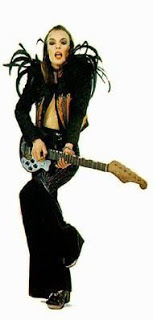 1972 - Roxy Music, Roxy Music: The first Roxy Music album finds the British glam rockers injecting the, by then, stale blues rock of the era with an eyeliner-rimmed rawness neatly paired with progressive rock underpinnings of Phil Manzanera's wailing guitar. Although Eno didn't have a musical background, he quickly became a multi-instrumentalist and lent an experimental artistry via synthesizer and tape effects.
1972 - Roxy Music, Roxy Music: The first Roxy Music album finds the British glam rockers injecting the, by then, stale blues rock of the era with an eyeliner-rimmed rawness neatly paired with progressive rock underpinnings of Phil Manzanera's wailing guitar. Although Eno didn't have a musical background, he quickly became a multi-instrumentalist and lent an experimental artistry via synthesizer and tape effects.1973 - Roxy Music, For Your Pleasure: While less accessible than Roxy Music's first album (although this writer's preferred LP), For Your Pleasure landed neatly at the top of the British charts. Americans, however, were lost: Rolling Stone's Paul Gambaccini wrote, "The bulk of For Your Pleasure is either above us, beneath us, or on another plane altogether." Were it not for the incredible album jacket, I never would have picked it up.
1973 - Here Come the Warm Jets: Arguably Eno’s most seminal and timeless work was conceived directly after his departure from Roxy Music (with band alumni Phil Manzanera and Andy Mackay). The album was painfully simple. Like artists such as T-Rex, whose Electric Warrior came out two years prior, the music bears spacious simplicity. Blank space was the goal. "I enjoy working with simple structures such as these, for they are transparent — comparable to a piece of graph paper and its grids. The grid serves as the reference point for the important information — the graph line itself."
1973 - Fripp & Eno: No Pussyfooting: I'd listen to this over and over while doing my homework drifting in and out of it's dreamy soundscape. When I worked at the Weekly, a woman in her mid-30's asked me if I could suggest something rather seductive, at which point, being 19, I swallowed my tongue. I mentioned No Pussyfooting and said if she wasn't happy with it, I'd buy it from her because my 3rd copy was getting a bit noisy, pop and scratch wise (we're so spoiled now). She said she liked the suggestive title. A day or two later, she came back into my office (cubicle) and said she bought Music for Airports and Another Green World.
 1974 - Taking Tiger Mountain (By Strategy): A concept album inspired by a Chinese book of postcards depicting an opera: pure art rock. One of my go to LPs at 3am.
1974 - Taking Tiger Mountain (By Strategy): A concept album inspired by a Chinese book of postcards depicting an opera: pure art rock. One of my go to LPs at 3am.1975 - Another Green World: Another stellar used records find.
1977 - Before & After Science: To kick off another wholly prolific year, this album explores cagey drum sequences, African polyrhythms and layered sounds. It marries the two divergent paths Eno's music traverses — insular ambience and raucous rock, whether of the polyrhythmic or painfully simple variety.
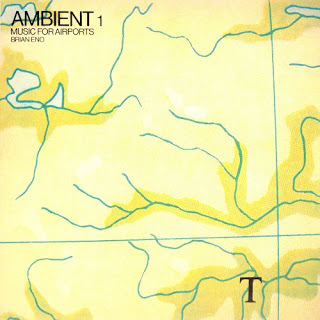 1977 - Ultravox, Ultravox!: The Ultravox album was slammed upon its release as contrived, intellectual art-rock offered up by washed-out, synth-loving Brits with shiny new clothes. The band's obsession with the fading electro-pop genre in 1977 seemed antiquated at a time when punk rock's trajectory was more defiantly vocal. Yet the album has stood the test of time, it's the new wave we think back on far more fondly than the punk era (for me, probably because all the new wave posers were as skinny and passive as I was - I never got beat up at a new wave venue, lol. That was not the case when I ventured into the L.A. punk scene).
1977 - Ultravox, Ultravox!: The Ultravox album was slammed upon its release as contrived, intellectual art-rock offered up by washed-out, synth-loving Brits with shiny new clothes. The band's obsession with the fading electro-pop genre in 1977 seemed antiquated at a time when punk rock's trajectory was more defiantly vocal. Yet the album has stood the test of time, it's the new wave we think back on far more fondly than the punk era (for me, probably because all the new wave posers were as skinny and passive as I was - I never got beat up at a new wave venue, lol. That was not the case when I ventured into the L.A. punk scene).1977 - David Bowie: Low and "Heroes": Low balanced A-side rock with B-side instrumentals. Producer Tony Visconti captured Bowie's humanity in the wake of his recent departure from Los Angeles and its hedonistic claims on his soul. Bowiet called L.A. "the most vile piss-pot in the world," while Berlin was a "Spartan antidote" where he could/would recover from drug-fueled psychosis and make music (by Let's Dance, many of us were hoping for a relapse). Each LP features Eno on synth, keys and guitar, while the loose guitar stylings of Robert Fripp lend rawness to Visconti's impeccable production. I don't include Lodger, here. I have a tendency still to overlook it.
1978- Ambient 1: Music for Airports: While Eno ventured into the experimental ambient genre prior to Airports, the album levitated his relationship with the genre. Eno wasn't courting Billboard charts with this album (was he ever?), but instead wanted the music (as he wrote in the liner notes) to "accommodate many levels of listening attention without enforcing one in particular; it must be as ignorable as it is interesting."
1979 - Talking Heads, Fear of Music: A transitional, and perhaps difficult album for Talking Heads, one that led out of the punk era and into a more refined sense of artistry.

1980 - Talking Heads: Remain in the Light: In what was the largest commercial flop for Talking Heads, and the most important of their career, Remain in the Light fused pulsing guitar with African drums and time signatures that were difficult to digest in the bloated Pepto Bismol corpus of popular music in 1980. David Byrne told Rolling Stone that critical consensus was that it "too black for white radio and too white for black radio." Byrne and Eno, who later had a falling out in the studio, studied African voodoo and percussion before applying it in the studio. "Once in a Lifetime" of course would go on to become a hit and Talking Heads most iconic tune.
Of course Eno would collaborate with Byrne on My Life in the Bush of Ghosts and produce U2's phenomenal Joshua Tree, I was off to New York in my club years - another era of "I don't remember; I don't recall."
Published on May 15, 2018 03:20
May 14, 2018
Karl Stoecker
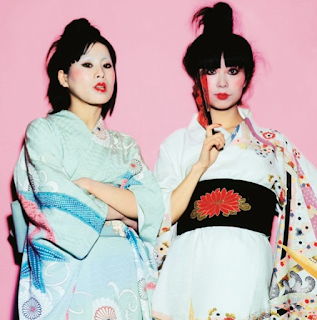 Kimono My House OuttakeKarl Stoecker wasn't about black and white, instead the iconic photographer was the harbinger for the likes of Mick Rock and Anton Corbijn, and more so for the more famous shock-photographers of the 70s and 80s (from Helmut Newton to Herb Ritz and Bruce Weber). Stoecker was essential to album art for Roxy Music and Lou Reed during Glitter's peak year, 1972, his vibrant images oozing sexuality, flirting with androgyny, and helping define a brief but influential era in popular music.
Kimono My House OuttakeKarl Stoecker wasn't about black and white, instead the iconic photographer was the harbinger for the likes of Mick Rock and Anton Corbijn, and more so for the more famous shock-photographers of the 70s and 80s (from Helmut Newton to Herb Ritz and Bruce Weber). Stoecker was essential to album art for Roxy Music and Lou Reed during Glitter's peak year, 1972, his vibrant images oozing sexuality, flirting with androgyny, and helping define a brief but influential era in popular music.Bryan Ferry took note of his fashion ad work and asked him to provide images for Roxy Music's first album, a deal that continued until Roxy's third LP, Stranded. In between, Stoecker famously shot the back cover of Reed's 1972, Bowie-produced glam-rock album, Transformer. Mick Rock provided the album's famous eerie, androgynous cover, but the back featured the dueling images of a man and woman. Stoecker's wife recalls its startling quality: "The whole thing with he was a she," she says, referring to the lyrics of "Take A Walk On the Wild Side." "I had this album the day it came out, when I was a kid. I would even think, was this the same person?" she says of the back cover, featuring the model Gala and Reed's roadie and friend Ernie Thormahlen, wearing a plastic banana in his jeans. "You know, when you're a kid and you stared at a record cover for ten hours," Patti continues, "you thought, was that the message? Is that him as a girl?"
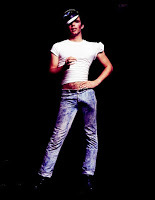 Transformer OuttakeOf all Roxy Music, Karl remembers getting on particularly well with Eno, who was often celebrated as the most eccentric member of the band. "Brian was really into music," he said. "He did that stuff with the trumpet player in New York [Jon Hassell]. He's done a lot of nice stuff with John Cale. He lived on Portobello Road, somewhere in Notting Hill, and so you'd go over there and he'd be doing interesting stuff. Like, they recorded a brass band playing badly. It was either a badly playing brass band or a brass band that was playing badly on purpose, and he'd be like, 'Yeah!' And I didn't get," he laughs.
Transformer OuttakeOf all Roxy Music, Karl remembers getting on particularly well with Eno, who was often celebrated as the most eccentric member of the band. "Brian was really into music," he said. "He did that stuff with the trumpet player in New York [Jon Hassell]. He's done a lot of nice stuff with John Cale. He lived on Portobello Road, somewhere in Notting Hill, and so you'd go over there and he'd be doing interesting stuff. Like, they recorded a brass band playing badly. It was either a badly playing brass band or a brass band that was playing badly on purpose, and he'd be like, 'Yeah!' And I didn't get," he laughs.In 1974, Stoecker photographed Sparks' Kimono My House, which would prove to be one of his last for the rock world. Unlike Rock and Corbijn, Stoecker was more in tune with the models than the music and seemingly opted out of the whole New York/London scene. He lives and works today in Miami Beach. "I think now I only want to be a beachcomber," he says. "I mean, taking photographs is fine, but that's what I want to be for my prime occupation if I can figure it out."
Published on May 14, 2018 19:58
Do You Think I Meant Country Matters?
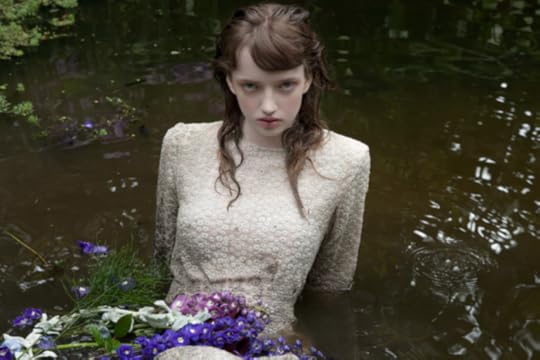 OpheliaBy 1974, Glam had reached its apex. Bowie had shed Ziggy and was immersed in cocaine and 1984, having truly become the strung out alien rock star that Ziggy Stardust prophesied. The music was no less rich and gorgeous (indeed Diamond Dogs is a stunning album, combining the best elements of both Ziggy and Aladdin Sane), but Bowie would soon be off to his next incarnation (the Thin White Duke and The Man Who Fell to Earth). Bolan had found his niche in the UK but, with the exception of minor hits in "Metal Guru," and "Get it On (Bang a Gong)" had failed in the key American market. Many in glam (from Sparks to The Sweet) had been stung by the contention that the genre was all flash and free of substance.
OpheliaBy 1974, Glam had reached its apex. Bowie had shed Ziggy and was immersed in cocaine and 1984, having truly become the strung out alien rock star that Ziggy Stardust prophesied. The music was no less rich and gorgeous (indeed Diamond Dogs is a stunning album, combining the best elements of both Ziggy and Aladdin Sane), but Bowie would soon be off to his next incarnation (the Thin White Duke and The Man Who Fell to Earth). Bolan had found his niche in the UK but, with the exception of minor hits in "Metal Guru," and "Get it On (Bang a Gong)" had failed in the key American market. Many in glam (from Sparks to The Sweet) had been stung by the contention that the genre was all flash and free of substance.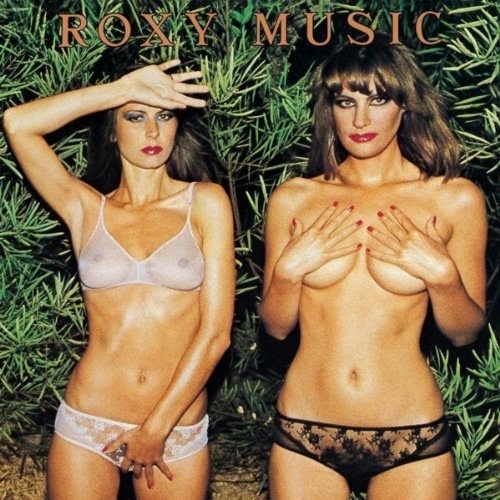 Roxy Music took that at face value and took it upon themselves to rectify the criticism by creating a detailed, complicated work that presented glam values in succinct terms; out of it came the middle finger Country Life, one of the most underrated albums of the 70s. The title Country Life comes from an elitist coffee-table magazine similar to Architectural Digest in America; a spread (excuse the pun) in Country Life was a sign that one had "made it" in society. With real style and parody, Roxy’s fourth album lampooned the magazine by replacing the elegant country homes and socialites in riding gear with two, nearly nude, heavily made up models making the sort of pun of which Shakespeare would have been proud: amalgamating cunt and country, tree and bush. There is a semblance of sexuality and the high and vulgar life of the rich and famous simultaneously. It is pure Shakespeare:
Roxy Music took that at face value and took it upon themselves to rectify the criticism by creating a detailed, complicated work that presented glam values in succinct terms; out of it came the middle finger Country Life, one of the most underrated albums of the 70s. The title Country Life comes from an elitist coffee-table magazine similar to Architectural Digest in America; a spread (excuse the pun) in Country Life was a sign that one had "made it" in society. With real style and parody, Roxy’s fourth album lampooned the magazine by replacing the elegant country homes and socialites in riding gear with two, nearly nude, heavily made up models making the sort of pun of which Shakespeare would have been proud: amalgamating cunt and country, tree and bush. There is a semblance of sexuality and the high and vulgar life of the rich and famous simultaneously. It is pure Shakespeare: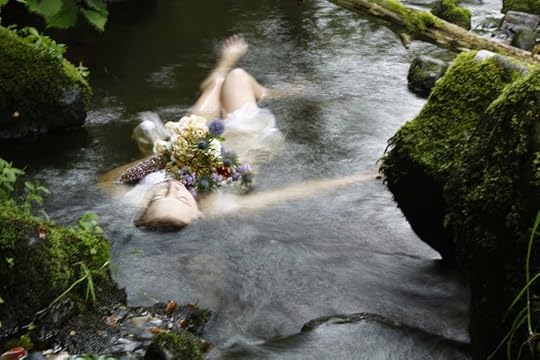 Hamlet: Lady, shall I lie in your lap?Ophelia: No, my lord.Hamlet: I mean, my head upon your lap?Ophelia: Ay, my lord.Hamlet: Do you think I meant country matters?
Hamlet: Lady, shall I lie in your lap?Ophelia: No, my lord.Hamlet: I mean, my head upon your lap?Ophelia: Ay, my lord.Hamlet: Do you think I meant country matters?While Bowie was conjuring up Diamond Dogs, Roxy's Country Life was varied, excessive and acidic. It was also the end of an era. Roxy would trade in the glam for a bit of their own "Country Life," reinventing themselves both thematically and musically; indeed a 1974 prelude to the 80s.
Country Life is another wonderfully diverse collection from Roxy that runs the gamut from rock to funk to country-pop. Everything sounds 100% natural and organic, particularly for so many divergent pop styles to be together in the same place. It's not awful for musical diversity to stick out like a sore thumb; often makes things interesting. But to have that diversity come together into a whole is a creature all it's own. It makes for the best jazz,the best rock and you really couldn't have funk and later hip-hop without the Roxy catalyst. Hmm, and not in the Rock 'n' Roll Hall of Fame.
Published on May 14, 2018 03:35



